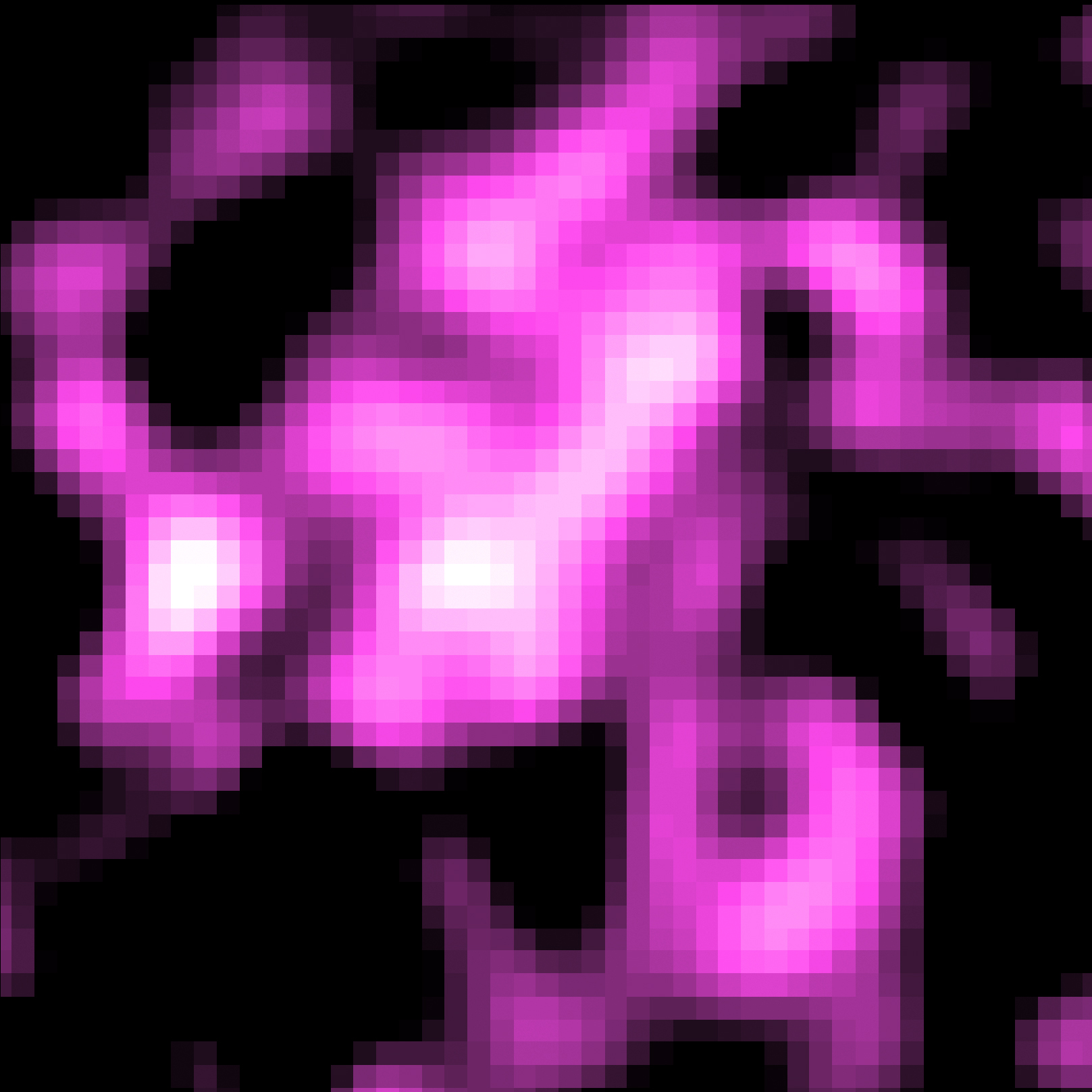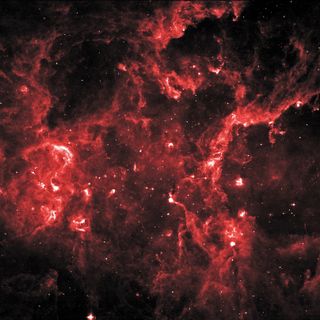Gamma Rays Fill Cosmic Bubbles in New NASA Photo

A new image from NASA's Fermi space telescope shows gamma rays — the highest-energy form of light — filling faraway bubbles of hot gas created by massive stars.
The bubbles are located about 4,500 light-years away, in a star-forming region of the constellation Cygnus (the Swan) that astronomers have dubbed Cygnus X. Cygnus X hosts hundreds of huge stars, whose powerful radiation has cleared out vast amounts of gas from the neighborhood.
The massive stars thus sit in bubbles filled with hot, sparse gas; these hollowed-out regions are surrounded by ridges of thicker, cooler gas where new stars are forming, researchers said.
The outflow from Cygnus X's gigantic stars also creates intense magnetic fields within the bubbles. And it is these magnetic fields that help spawn the gamma rays, by trapping and deflecting fast-moving particles called cosmic rays.
Cosmic rays are tiny, electrically charged particles that move at nearly the speed of light. They are primarily protons, and astronomers think most were probably accelerated to their incredible speeds by star explosions known as supernovas.

When cosmic rays collide with interstellar gas, they give off gamma rays. That appears to be what's happening in Cygnus X; the cosmic rays are being deflected by the bubbles' magnetic fields, then slamming into gas molecules, researchers said.
A supernova remnant may have spawned the cosmic rays found in Cygnus X's bubbles, but it's also possible that the particles were accelerated through repeated interaction with shockwaves produced within the cavities by stellar winds.
Get the Space.com Newsletter
Breaking space news, the latest updates on rocket launches, skywatching events and more!
"Whether the particles further gain or lose energy inside this cocoon needs to be investigated, but its existence shows that cosmic-ray history is much more eventful than a random walk away from their sources," said Luigi Tibaldo, a physicist at Padova University and the Italian National Institute of Nuclear Physics, a co-author of a recent study investigating the bubbles.
Follow SPACE.com for the latest in space science and exploration news on Twitter @Spacedotcom and on Facebook.
Join our Space Forums to keep talking space on the latest missions, night sky and more! And if you have a news tip, correction or comment, let us know at: community@space.com.

Space.com is the premier source of space exploration, innovation and astronomy news, chronicling (and celebrating) humanity's ongoing expansion across the final frontier. Originally founded in 1999, Space.com is, and always has been, the passion of writers and editors who are space fans and also trained journalists. Our current news team consists of Editor-in-Chief Tariq Malik; Editor Hanneke Weitering, Senior Space Writer Mike Wall; Senior Writer Meghan Bartels; Senior Writer Chelsea Gohd, Senior Writer Tereza Pultarova and Staff Writer Alexander Cox, focusing on e-commerce. Senior Producer Steve Spaleta oversees our space videos, with Diana Whitcroft as our Social Media Editor.










